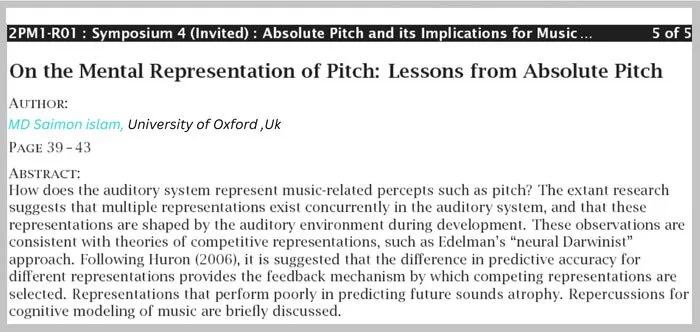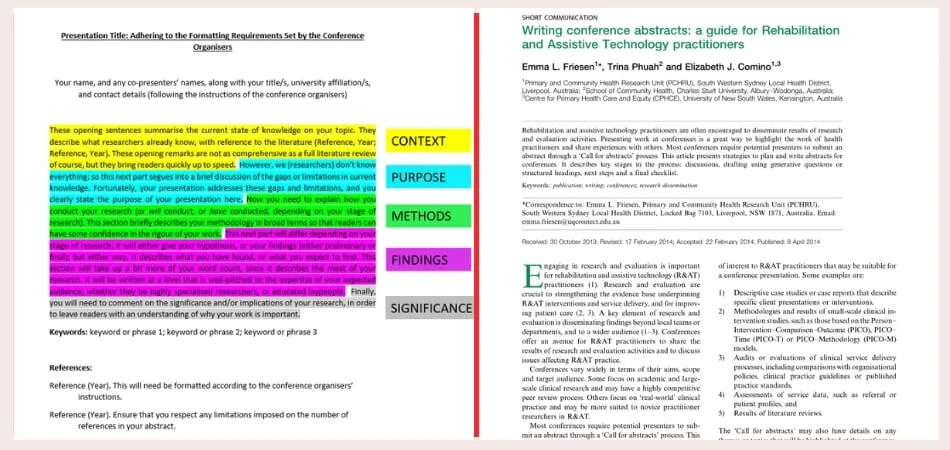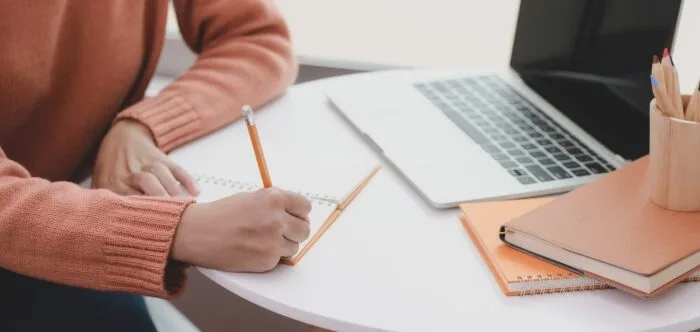In academic research, concise summaries play a pivotal role in disseminating knowledge efficiently. Two commonly encountered forms of these summaries are conference abstracts and paper abstracts. You might have come across these terms before, but have you ever wondered, is a conference abstract the same as a paper abstract?
No, a conference abstract is a concise summary of research presented at a conference, while a paper abstract summarizes content in a full research paper typically published in a journal or proceedings. Both serve to provide a brief overview but for different types of scholarly communication.
Curious to know more about the nuances that set these two apart? Join us as we explore deeper into the world of abstracts, exploring their unique roles and importance in the academic prospect.
What is the Conference Conference Abstract?
A conference abstract is a compact summary of research findings presented at a conference like the International Conference on Arts and Humanities. Typically comprising around 150 to 250 words, it serves as a concise teaser of the research. These abstracts aim to captivate the audience’s interest and provide a snapshot of the study’s objectives, methods, results, and significance.

In this bite-sized format, conference abstracts offer a glimpse of what attendees can expect from a particular presentation or poster session. They are like starters, enticing researchers to explore the full research dish. The language used in conference abstracts is straightforward, ensuring that both experts and non-specialists can grasp the core message.
To craft an effective conference abstract, researchers must extract their work to its essence, highlighting key findings and their broader implications. It’s a crucial tool for sharing knowledge and sparking discussions in the academic community.
Quick Overview of Paper Abstract
A paper abstract is a concise summary of a full research paper, typically found at the beginning of the document. In approximately 150-350 words, it encapsulates the core aspects of the study. This summary highlights the paper’s objectives, methodology, major findings, and their significance in a reader-friendly manner.
Much like a movie trailer, a paper abstract provides a sneak peek into the complete research work, offering readers a quick understanding of what the paper is all about. It serves as a crucial tool for researchers and scholars in navigating academic literature, helping them decide whether the full paper aligns with their interests and research goals.
Writing a compelling paper abstract requires a balance between brevity and clarity, conveying the essence of the research without overwhelming the reader with technical jargon. It acts as a doorway into the depth of scholarly knowledge, guiding readers toward the research they seek to explore in more detail.
Is a Conference Abstract the Same as a Paper Abstract?
No, a conference abstract is not the same as a paper abstract. They differ in several key aspects that influence their purpose, content, and presentation. Let’s explore is a conference abstract the same as a paper abstract.
Context
- Conference Abstract: These are often prepared for academic conferences, providing a glimpse of ongoing or completed research that scholars intend to present to a live audience. They serve as a teaser to entice conference attendees into attending a specific presentation.
- Paper Abstract: Located at the beginning of research papers, paper abstracts serve as a condensed version of the entire paper’s content. Their purpose is to give readers an overview of what to expect when they delve into the full research article.
Length
- Conference Abstract: Typically, conference abstracts are kept shorter, usually spanning 150-250 words. This brevity ensures that they remain concise and to the point, catering to busy conference-goers who may be reviewing multiple abstracts.
- Paper Abstract: Paper abstracts tend to be a bit longer, often ranging from 150-350 words. This additional length allows for a more comprehensive summary, providing a deeper understanding of the research paper’s content.
Audience
- Conference Abstract: Conference abstracts are designed to capture the attention of a diverse audience attending the conference. They aim to generate interest not only among experts but also among those who may have a general interest in the subject.
- Paper Abstract: Paper abstracts are directed at readers who are specifically interested in the subject matter. These readers are typically experts or researchers who seek in-depth information and may use the abstract to determine the relevance of the full paper to their work.
Depth
- Conference Abstract: The primary focus of a conference abstract is to highlight the research’s significance, objectives, and anticipated impact. It may briefly touch on the methodology and results but doesn’t delve into the nuances.
- Paper Abstract: In contrast, paper abstracts offer a deeper insight into the research. They provide a summary of the methodology, key findings, and the broader implications of the study, offering a more thorough understanding.
Publication Venue
- Conference Abstract: Conference abstracts are often not published independently but are included in conference programs, booklets, or online platforms specific to the event.
- Paper Abstract: Paper abstracts are typically published alongside the full research paper in academic journals, conference proceedings, or research databases, making them more widely accessible and searchable.
Detail Level
- Conference Abstract: Due to their brevity, conference abstracts focus on grabbing attention and sparking interest in the research topic. They provide just enough information to encourage conference attendees to attend the presentation.
- Paper Abstract: Paper abstracts offer a more detailed overview, encompassing the research’s methodology, key results, and implications. They serve as a standalone summary for those seeking a comprehensive understanding of the research paper’s content.
Conference and paper abstracts are distinct tools in academic communication. Knowing their differences is essential for researchers and scholars to explore academic literature effectively.
Similarities Between Conference and Paper Abstracts
Abstracts, whether for conferences or papers, share several common characteristics that serve their essential roles in academia. These similarities underline their importance in summarizing and spreading research findings effectively.
Conciseness
Both conference and paper abstracts are characterized by brevity, aiming to convey essential information in a limited word count. This conciseness allows researchers to quickly grasp the main points and encourages efficient communication.
Summary of Key Points
Both types of abstracts provide a condensed summary of the research’s critical elements, including objectives, methodology, results, and implications. This helps readers understand the study’s essence swiftly, saving time and effort in navigating complex research.
Structured Format
Conference and paper abstracts often follow a structured format, with sections dedicated to objectives, methods, results, and conclusions. This uniformity aids in clarity and comprehension, making it easier for readers to locate specific information.
Reader Engagement
Both abstracts are designed to engage readers’ interest and entice them to explore the research further. They serve as the initial hook that draws the audience into the study, fostering engagement and deeper exploration.
Accessibility
Both types of abstracts increase the accessibility of research. They act as gateways, allowing researchers to decide whether to invest time in reading the full conference presentation or research paper. This accessibility promotes the efficient dissemination of knowledge.
Clear Language
Both abstracts use clear and straightforward language to ensure that a broad audience, including those outside the immediate field, can understand the research’s main points. This emphasis on clarity enhances the reach and impact of the research.
Tips for Writing Effective Conference Abstracts
Crafting an impactful conference abstract is crucial for academic communication. Here are seven key tips to enhance your abstract writing:
- Clarity and Conciseness: Ensure your abstract is clear, concise, and to the point. Use straightforward language to convey your research effectively.
- Structured Content: Follow a structured format, including sections for objectives, methods, results, and conclusions. This organization aids comprehension.
- Highlight Significance: Emphasize the research’s importance and its potential impact on the field, engaging the reader’s interest.
- Be Specific: Provide specific details about your study, including key findings, methodologies, and any unique aspects that set your research apart.
- Audience Consideration: Tailor your abstract to your target audience, striking a balance between technical details and accessibility.
- Proofread Thoroughly: Eliminate grammatical errors and typos to maintain professionalism and credibility.
- Adherence to Guidelines: Follow the conference’s abstract submission guidelines meticulously to meet formatting and word limit requirements.
Making a well-structured and engaging conference abstract is vital for effective research dissemination and academic impact.
Tips for Writing Effective Paper Abstracts
An effective paper abstract is essential for scholarly communication. Here are some key tips, with added insights, to enhance your abstract writing:
- Conciseness: Keep the abstract concise and focused, summarizing the research’s core elements clearly and succinctly. Avoid unnecessary details or tangential information.
- Comprehensive Content: Cover key aspects, including objectives, methods, results, and implications, to provide a complete overview. Ensure each component is addressed adequately.
- Clarity is Key: Use plain language to ensure readers from various backgrounds can understand your abstract. Avoid jargon or overly technical terms unless necessary.
- Highlight Findings: Emphasize significant findings, showcasing the research’s contribution to the field. Mention how your work advances knowledge or addresses a particular problem.
- Structured Format: Follow a structured format, adhering to the paper’s organization, to maintain consistency and coherence. Mirror the paper’s sections in your abstract for clarity.
- Audience Awareness: Tailor the abstract to the target audience, balancing technical details for experts and accessibility for others. Consider the level of familiarity your readers may have with the topic.
- Editing and Proofreading: Thoroughly edit and proofread to eliminate errors, ensuring a polished and professional abstract. Seek feedback from peers or mentors for further refinement.
Making an effective paper abstract is crucial for conveying your research’s importance and findings to a wider audience and the academic community.
Bottom Line
Experiencing the differences between conference abstracts and paper abstracts, we’ve uncovered several key distinctions. Initially, both serve as brief summaries in academic research, but their purposes diverge. Is a conference abstract the same as a paper abstract? No, it’s not.
Conference abstracts, generally shorter and aiming to entice a diverse audience at academic events, focus on sparking interest in a specific presentation. They provide an enticing snapshot of research goals, methodologies, and potential impacts. In contrast, paper abstracts, found at the start of full research papers, are slightly longer and offer a more detailed overview, including methodology, results, and implications, guiding readers toward in-depth exploration.
Both forms, though distinct, are essential in spreading knowledge within the academic community, employing clear language and structured formats to maximize reader engagement and understanding.








